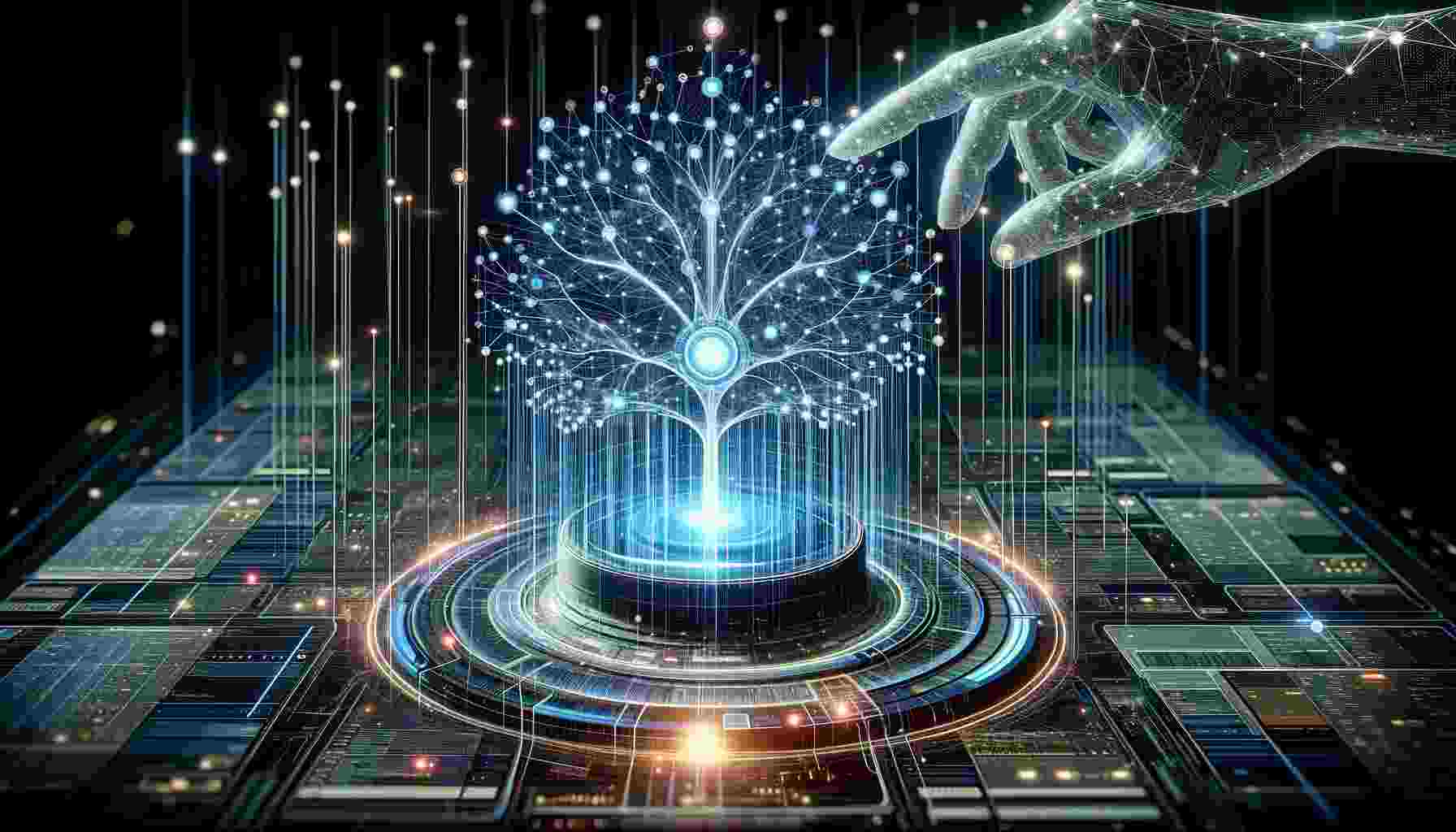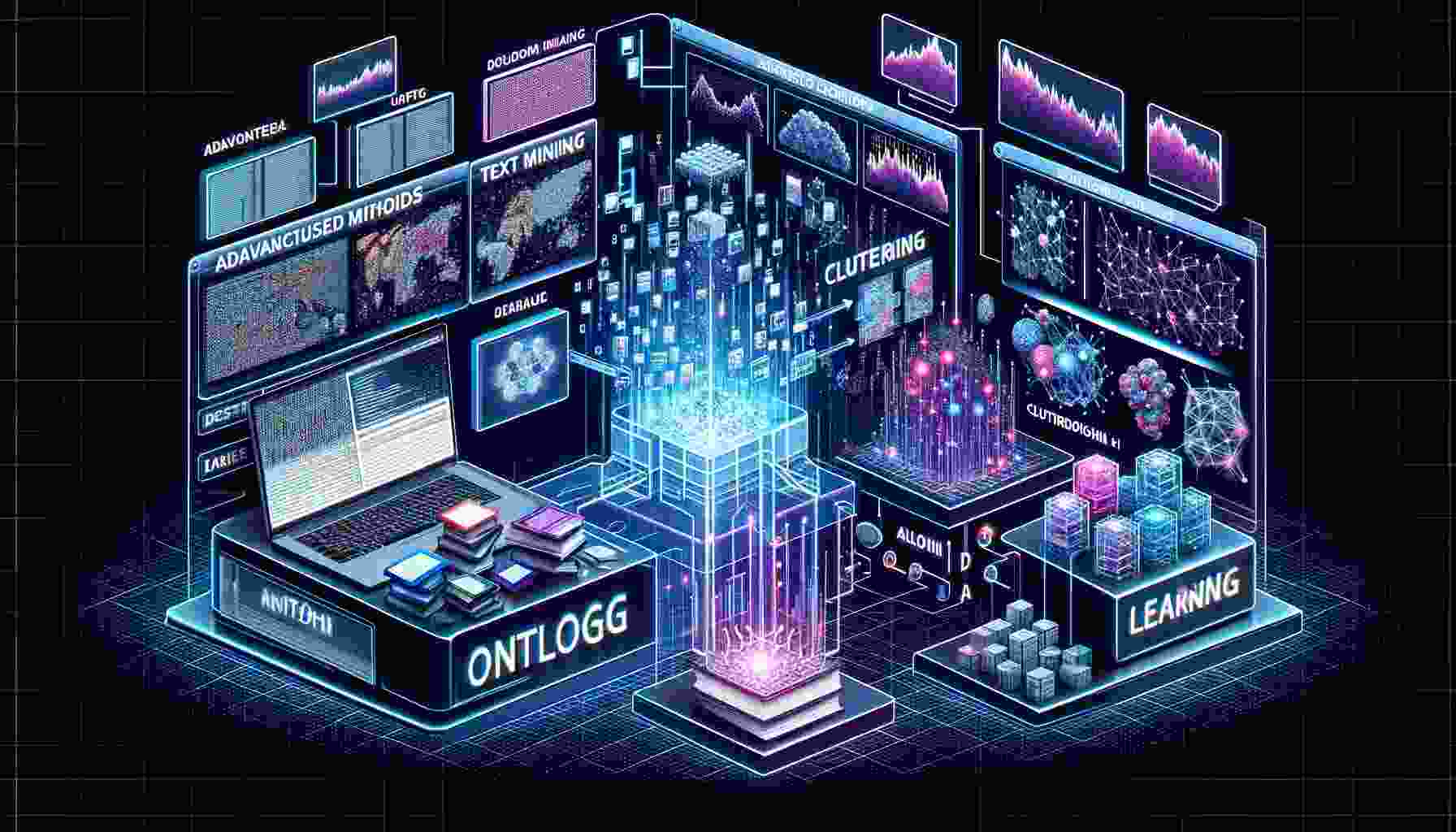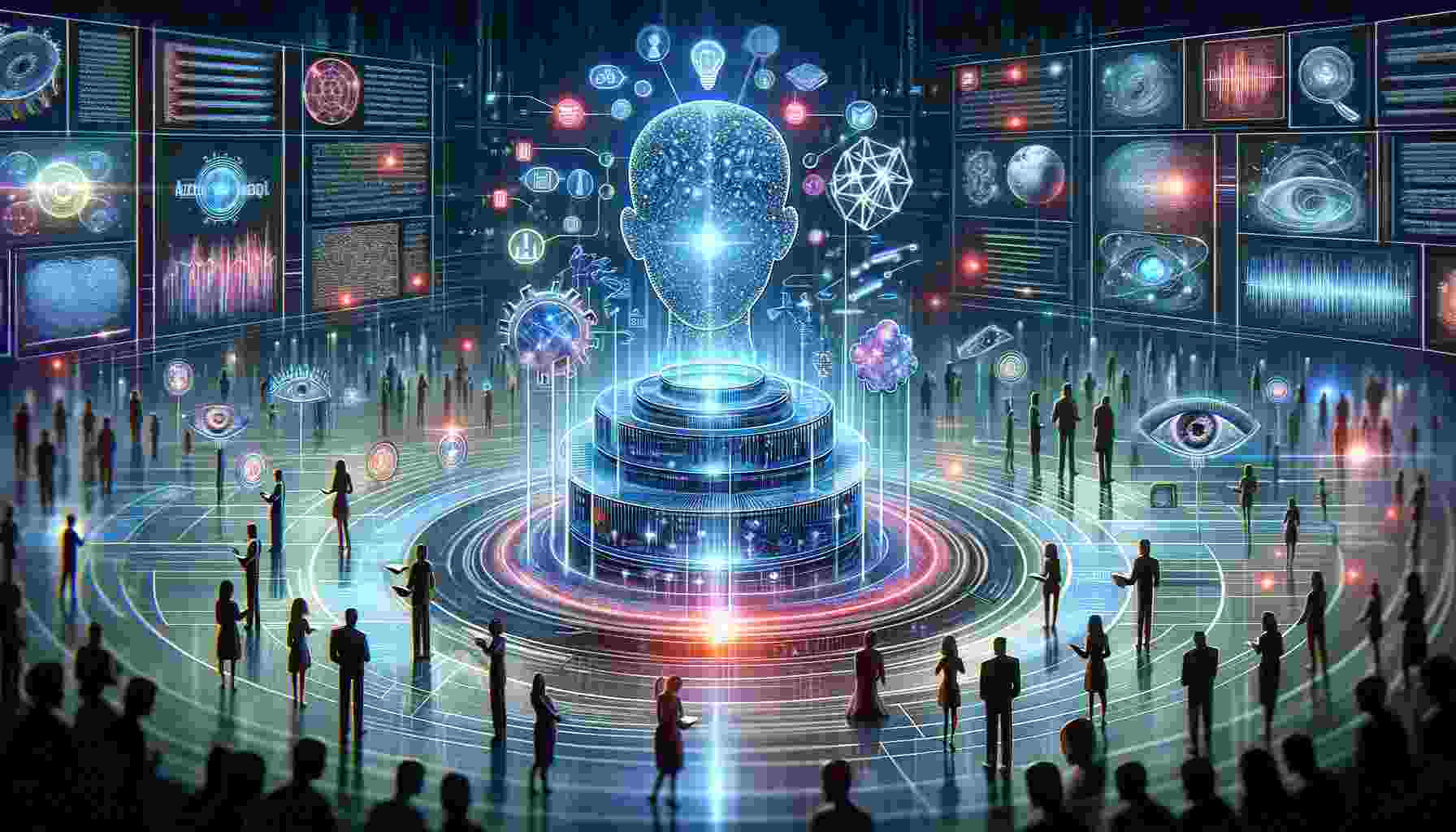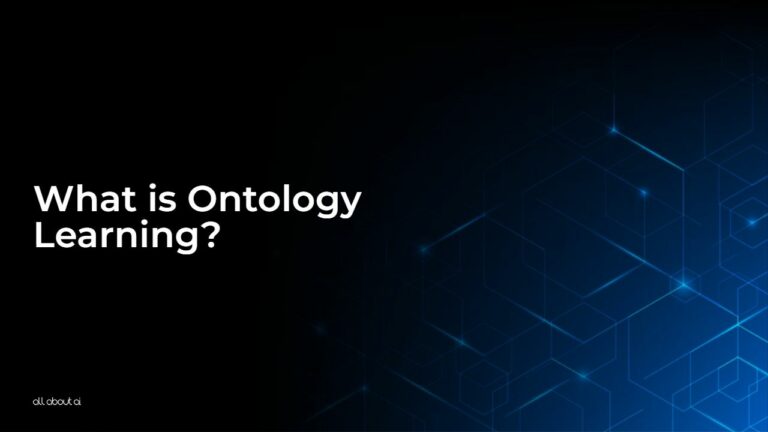What is ontology learning? At its core, it involves the automated extraction, construction, and updating of ontologies. These are structured frameworks designed for organizing vast amounts of information, enabling AI systems to process and understand data more efficiently.
Looking to learn more about ontology learning? Read this article written by the AI enthusiasts at All About AI.
Why Is Ontology Learning Beneficial in AI?

The significance of ontology learning in artificial intelligence is manifold. Primarily, it facilitates the automated organization of large datasets, a task increasingly vital in our data-driven world.
Enhanced Data Organization and Management
One of the primary benefits of ontology learning in AI is the enhanced organization and management of data. Ontologies provide a structured framework, allowing AI systems to categorize and store data more effectively.
This structured approach is crucial in handling the ever-increasing volume of data, making it easier to retrieve, analyze, and utilize information.
Improved AI Model Accuracy and Efficiency
Ontology learning significantly improves the accuracy and efficiency of AI models. By providing a clear semantic structure, ontologies help AI systems to better understand and interpret the context of data.
This leads to more accurate outcomes in tasks like natural language processing, image recognition, and predictive analytics.
Facilitates Interoperability and Data Integration
Ontologies enable interoperability among different systems and data integration from various sources. By using a common framework for knowledge representation, AI systems can easily share and combine data, leading to more comprehensive analyses and insights.
What Challenges Arise in Ontology Learning?
Despite its benefits, ontology learning is not without challenges.
Complexity in Extracting Relevant Information
One of the main challenges in ontology learning is the complexity involved in extracting relevant information from diverse and unstructured data sources. This requires sophisticated algorithms and techniques to accurately identify and categorize data.
Ensuring Accuracy and Consistency
Maintaining the accuracy and consistency of ontologies is a significant challenge. As data evolves, ontologies need to be updated continuously, ensuring that they accurately reflect the current knowledge and information.
Scalability and Maintenance
As data volumes grow, scaling ontologies to accommodate this growth while maintaining their structure and usefulness becomes a challenge. This also includes the ongoing maintenance required to keep ontologies up-to-date.
Integration with Existing Systems
Integrating ontologies with existing systems and workflows can be challenging. This involves ensuring compatibility and seamless communication between different systems and the ontology.
Exploring Methods Available for Ontology Learning

Ontology learning employs a variety of methods, including advanced text mining, clustering techniques, and sophisticated machine learning algorithms.
Text Mining and Natural Language Processing
Text mining and natural language processing (NLP) are widely used in ontology learning. These methods involve analyzing and extracting meaningful patterns from textual data, which are then used to build and refine ontologies.
Machine Learning Algorithms
Machine learning algorithms play a crucial role in ontology learning, especially in pattern recognition and categorization of data. These algorithms can automatically identify relationships and structures within data sets.
Data Mining and Clustering
Data mining and clustering techniques are used to discover patterns and relationships in large data sets. This helps in organizing data into ontologies based on similarities and differences.
Rule-Based Systems
Rule-based systems involve defining a set of rules that guide the creation and modification of ontologies. These systems rely on predefined logic to structure data.
Crowdsourcing and Collaborative Approaches
Crowdsourcing and collaborative methods involve leveraging the knowledge and expertise of a large group of people to build and refine ontologies. This approach can provide a more diverse and comprehensive perspective.
How Do We Evaluate Ontology Learning?
Evaluation in ontology learning is a critical step, involving the assessment of the ontology’s accuracy, completeness, and relevance.
Step 1: Assessing Accuracy
The first step in evaluating ontology learning is to assess the accuracy of the ontologies created. This involves examining how well the ontology represents the underlying data and knowledge.
Step 2: Checking Completeness
Evaluating the completeness of the ontology is crucial. This step ensures that the ontology covers all necessary aspects of the knowledge domain it represents.
Step 3: Relevance Evaluation
Relevance evaluation involves determining whether the ontology is applicable and useful for the intended purposes. This step assesses the practical utility of the ontology.
Step 4: Consistency Check
A consistency check is necessary to ensure that there are no contradictions or conflicts within the ontology. This step maintains the integrity of the ontology.
Step 5: Domain Expert Review
Finally, a review by domain experts can provide insights into the ontology’s quality and applicability. Expert feedback is vital for refining and validating the ontology.
What Are Different Types of Ontology Knowledge Models?
Ontology knowledge models vary greatly, each serving different purposes.
Hierarchical Models
Hierarchical models organize information in a tree-like structure, depicting relationships in terms of parent-child hierarchies. This model is effective for representing systems where a clear hierarchy exists.
Network Models
Network models represent knowledge as a network of interconnected nodes. This model is suitable for complex systems where relationships are not strictly hierarchical.
Logical Models
Logical models use formal logic to represent relationships and dependencies within data. They are useful in scenarios where precise and clear-cut relationships need to be established.
Taxonomic Models
Taxonomic models focus on classification and categorization, organizing data into groups and subgroups based on shared characteristics. They are effective in systems where categorization is essential.
Ontology as a Tool for Digital Transformation
Ontology is increasingly seen as a transformative tool in the digital landscape. It aids in seamless data integration, enhances semantic search capabilities, and plays a crucial role in the development of intelligent systems that understand and process complex data structures.
Real-World Applications of Ontologies

The applications of ontologies in the real world are vast and varied. They are fundamental in natural language processing, enabling more nuanced and accurate interpretation of human language.
- Healthcare: In healthcare, ontologies are used for patient data management, disease classification, and in the development of personalized medicine strategies. They help in integrating various types of medical data for better patient care.
- E-Commerce: Ontologies in e-commerce improve product categorization, recommendation systems, and customer service by understanding customer preferences and behavior patterns.
- Financial Services: In the financial sector, ontologies assist in risk assessment, compliance monitoring, and fraud detection by structuring vast amounts of financial data.
- Natural Language Processing (NLP): Ontologies are fundamental in NLP for sentiment analysis, chatbots, and language translation, providing a deeper understanding of language and context.
- Semantic Web: In the semantic web, ontologies enable more efficient and accurate web searches, data integration, and knowledge sharing across various online platforms.
The Future of Ontology Learning in AI
Looking ahead, the future of ontology learning in AI appears bright and promising. With ongoing advancements in machine learning and natural language processing, we can expect ontologies to become more sophisticated and accurate.
Integration with Advanced Machine Learning
The future of ontology learning in AI includes deeper integration with advanced machine learning techniques. This will enable the creation of more dynamic and adaptable ontologies.
Automated Ontology Generation and Updating
Developments in automated ontology generation and updating are expected. AI systems will be able to create and maintain ontologies with minimal human intervention, enhancing efficiency.
Enhanced Natural Language Understanding
Improvements in natural language understanding will lead to more sophisticated ontologies. These ontologies will better capture the nuances and complexities of human language.
Cross-domain Ontology Applications
We will see an increase in cross-domain ontology applications, where ontologies from different fields are integrated, leading to more comprehensive knowledge systems.
Ontologies in Edge Computing
The application of ontologies in edge computing is a future trend. Ontologies will be used to structure data in decentralized systems, enabling more efficient data processing at the edge of networks.
Enter the dynamic world of artificial intelligence with our specialized glossaries. Whether you’re just starting or already advanced, new knowledge is always around the corner!Want to Read More? Explore These AI Glossaries!
FAQs
What is ontology in deep learning?
What is the purpose of the ontology?
What are the main features of an ontology?
What are the benefits of learning ontology?
What is the ontology learning process?
Final Words
Ontology learning stands at the forefront of AI, offering a pathway to more advanced and intelligent systems. As the field continues to evolve, it holds the promise of revolutionizing our approach to data interpretation and AI development, shaping the future of technology and its applications in myriad domains.
This article was written to answer the question, “what is ontology learning,” discussing its use in AI. Now, expand your knowledge of the AI landscape with the articles in our AI Terminology Guide.





